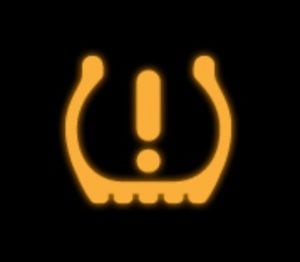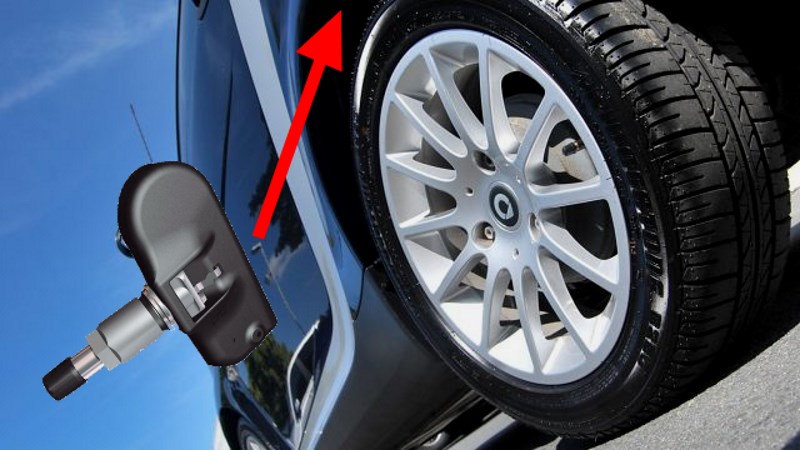What’s a Tyre Pressure Monitoring System Anyway?

The TPMS warning light.
Had that little horseshoe-shaped light pop up on your dash when you’re cruising along Te Rapa Road or hitting the speed bumps round Hillcrest? That’s your Tyre Pressure Monitoring System (TPMS) having a yarn, telling you at least one tyre’s got low pressure. Handy, aye?
Everyday Hamilton driving means traffic jams, potholes, and those sneaky roundabouts near Rototuna or out in Cambridge. Bit of stop-start, bit of curb action – it’s rough on tyres. The TPMS keeps an eye on the air in the tyres for you, whether you’re running a Honda Fit, Nissan Leaf, or even something less common like a Peugeot 3008 or Toyota Crown Athlete.
Basically, this setup watches your tyre pressure and lets you know when it gets too low, helping avoid silly-flat tyres, chewing up your tread, guzzling more fuel and, let’s be honest, keeping things a bit safer for everyone onboard.
How Does TPMS Actually Work?
We mainly see two types in the workshop:
Direct TPMS: These use proper sensors sitting inside the tyre itself – they read the actual air pressure and send those numbers straight to your dash. Some flash models show you the reading for each tyre – others just throw up the warning light if things aren’t right.
Indirect TPMS: These don’t use extra sensors but watch how fast your tyres are spinning. If one gets a bit flat, it spins quicker since it’s a smidge smaller. The system figures it out and again, pings you on the dash. With these, though, every time you get the pressure right, you gotta reset the TPMS or it’ll get itself all confused. Check out this guide for resetting your tyre pressure monitoring system if you want a go at it yourself.
Why TPMS Plays Up
Seen a few issues come through here, especially after Hamilton’s rough winters or if someone’s been tackling long trips between Morrinsville and Raglan. Some of the most common problems are:
Dead Sensor Batteries: Those sensors aren’t powered by thin air – they’ve got little batteries inside, usually good for 5-7 years. Once they cark it, you’ll start getting warnings even if your tyres are sweet.
Corroded Valve Stems: Bit of water, bit of muck, and before you know it there’s corrosion messing with the sensors, especially if you’re out and about on country roads near Gordonton or Matangi. That can crack the valve stem, or even make the whole lot a bit dodgy. You might find you need a new tyre or even a fresh tyre replacement if things get real bad.
Not Resetting After Tyre Service: Got indirect TPMS? Every time you pump them up or swap a tyre, reset that system or your readings won’t line up. Bang on about it, honestly!
How Do You Know Your TPMS Is On the Blink?
Here’s what you might notice:
Weird Readings: The screen on your dash shows way off numbers or your warning light’s going nuts even if your tyres look fine. Had this turn up the other week on a customer’s Hyundai i30 – false alarm after false alarm.
Corrosion on the Sensors: Had someone from Ngaruawahia in with a Suzuki Swift showing flakey, white crud all round the valve stem. That’s classic corrosion. Not great.
Need a New TPMS or Sensor Replacement in Hamilton?
If your TPMS is acting up or you reckon those sensors need replacing, just swing by. Doesn’t matter if you’re driving a Ford Ranger from Frankton or a Volvo XC60 from Tamahere. We see all sorts.
One of our techs will take a look, sort the diagnostics, and if needed, we’ll swap those sensors with quality replacements. Makes a big difference for your WOF and makes sure your car’s ready for whatever the Kiwi roads throw at you – be it a foggy winter morning or those melting hot summer days when tyres go soft.
Worth noting: we’re a proper workshop, so we don’t just sell the parts. Bring your car in – we’ll track down the fault, get the right bits, and fit them up so you’re good to go. Painless!

